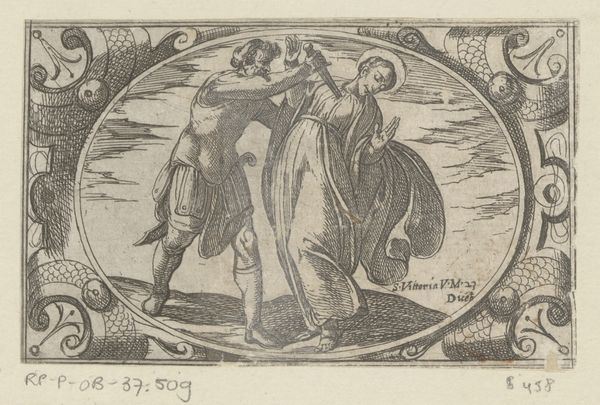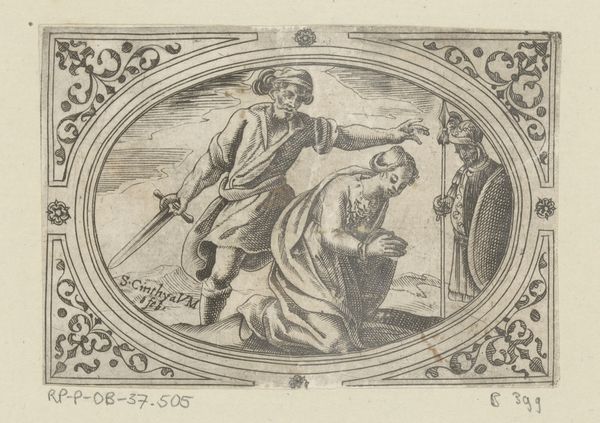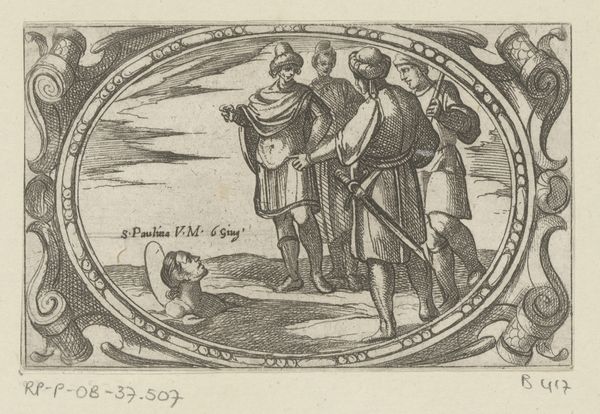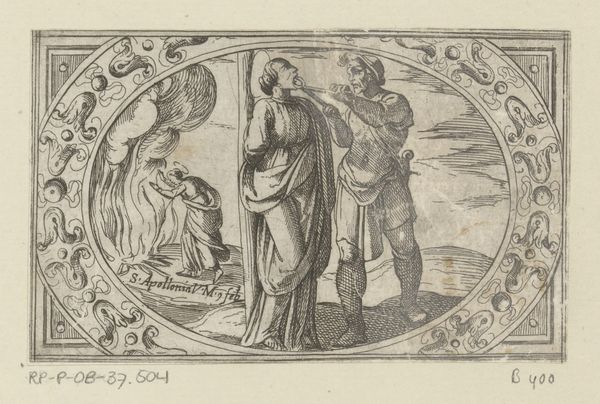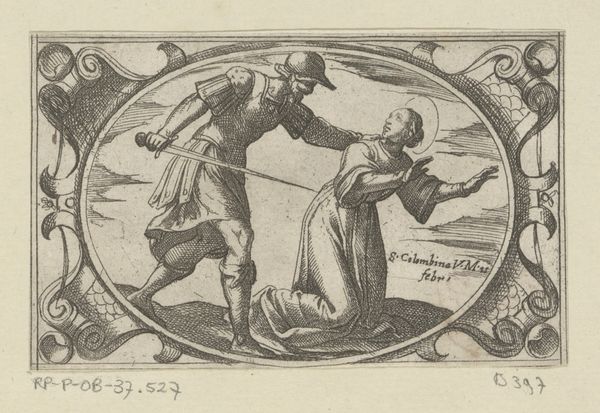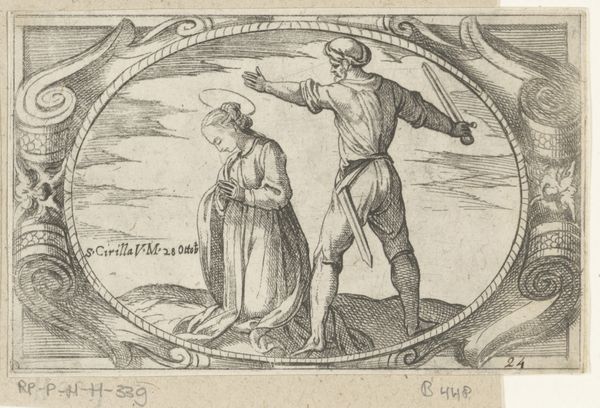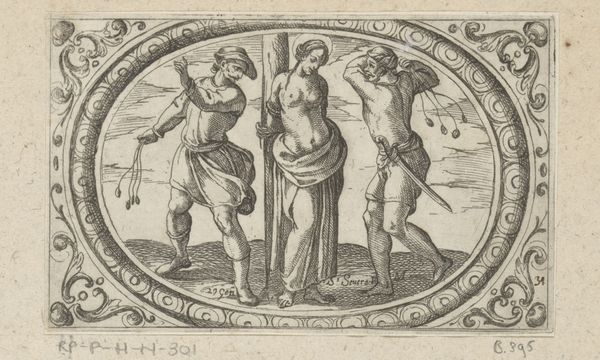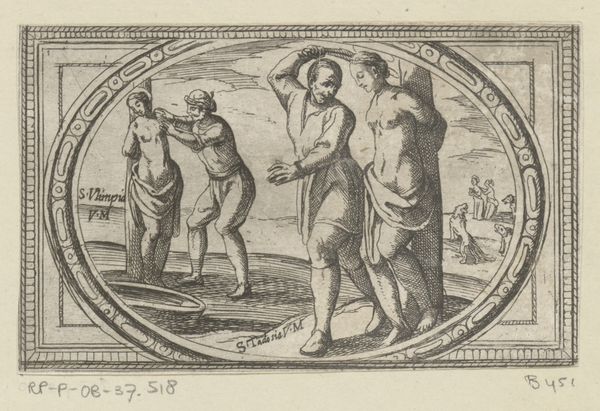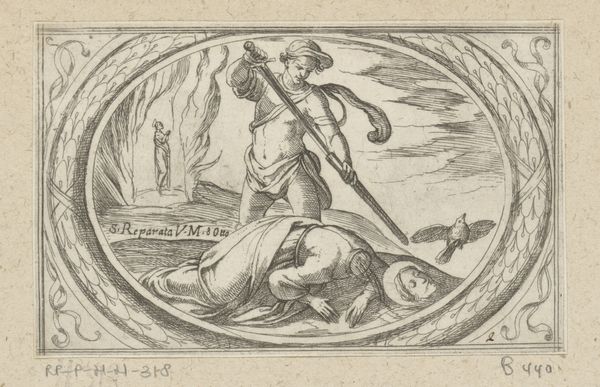
drawing, print, pen, engraving
#
drawing
# print
#
pen illustration
#
old engraving style
#
figuration
#
11_renaissance
#
pen-ink sketch
#
line
#
pen work
#
sketchbook drawing
#
pen
#
history-painting
#
engraving
Dimensions: height 73 mm, width 114 mm
Copyright: Rijks Museum: Open Domain
Antonio Tempesta etched "H. Anatolia" around 1600, a modest print brimming with potent iconography. Anatolia, the saint, is led away by a figure wielding a rod, yet she turns, hand raised in defiance. Consider this raised hand, a gesture that echoes through centuries—from ancient Roman orators to Renaissance depictions of biblical scenes. It is a symbol of resistance, of truth standing against force. The rod, a phallic symbol, suggests male dominance and aggression. This visual tension speaks to our collective psyche, where power struggles and assertions of will play out. The symbol of the rod, a simple tool, extends to the scepter of kings, the staff of religious leaders, or the wand of a magician. It is a symbol that embodies authority, a recurring motif in the theater of human existence. Its continuous reinvention and adaptation attests to its enduring relevance, a testament to our shared cultural vocabulary, echoing through time and reshaping itself within new narratives.
Comments
No comments
Be the first to comment and join the conversation on the ultimate creative platform.

